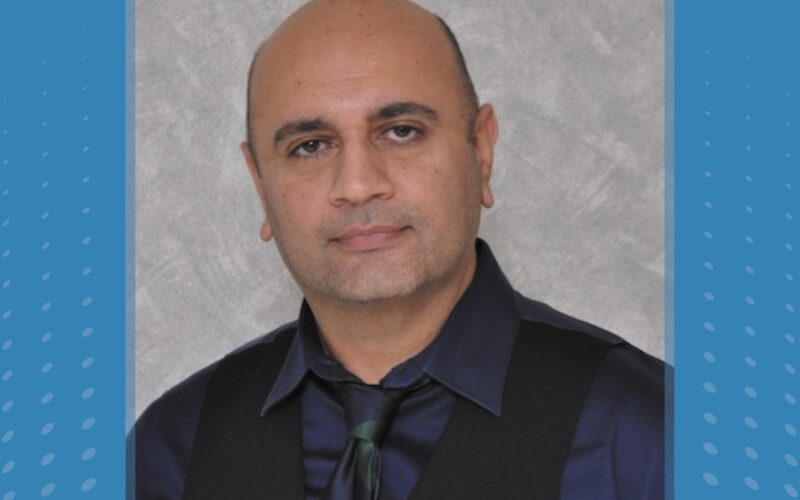At DENTALEZ, we’ve always listened to our audience, and for years, that’s fed the kinds of evolutions and innovations that you’ve come to take for granted in our product lines.
As part of this endeavor, we’d like to introduce you to some of the people we work so closely with, and let you get to know their stories, too. We started our series with a Pennsylvania private practice dentist, Dr. Sardina, who’s been managing a growing practice in Lancaster and advises us on some of our handpieces and utility equipment.
Today, we’re introducing you to Dr. Monish Bhola, who runs two busy specialty practice locations in Michigan, and an education institute.
Could you give us a little more background, Dr. Bhola? Tell our readers about your education, professional path, and current working status in the dental world.
I did my dental training at University of Detroit Mercy School of Dentistry, and my specialty training in periodontics and implantology at IUSD, Indianapolis, because I wanted to become a Hoosier.
After completion of my residency training and fellowship, I was offered a teaching position at Detroit Mercy, so I moved to Detroit to teach at the dental school. Soon after, I was tasked with starting a periodontal and implant program. After laying down the initial foundation of the program, I served as the Program Director and Director of Implantology for almost fifteen years. During that same time period, I was also in part-time private practice. I left the University in 2014 to go into full-time private practice in Michigan.
I currently practice at two locations; one is a six-operatory facility and the other location has nine operatories, including three surgical operatories. Education remains a top priority for me so we also do a lot of teaching and Continuing Education (CE).
How did your collaboration with DENTALEZ come about, and what has been your main involvement so far?
When we were building our second location, we needed a lot of equipment. We were introduced to the Forest line and the smart Aeras compressors and vacuums.
At the time, there were some smart chairs that I evaluated and consulted on and gave feedback to a few manufacturers. I was also invited to use and give feedback on the Aeras 500 Elite handpiece. What I noticed right away with the Aeras 500 was the ergonomics—the design is very balanced; neither top- nor bottom-heavy. And, I really like the way a clinician can hold the handpiece ―it has flat sides (versus rounded) adding to the ergonomics and making it very comfortable to use. Having worked with it for a while now, I’ll add that the torque it generates, especially when we have to section bridges and crowns, is unlike anything I’ve ever used in the past..
Being a Key Opinion Leader for so many companies, the involvement with DENTALEZ has been very personal. It hasn’t felt overwhelming or corporate; it has been a treat to work with an intimate group of clinicians and management. I like the tight-knit, personal interactions, and the quality of the products speak for themselves.
Which piece(s) of dental equipment would you say are most important to you, in your day-to-day work, and why?
Because of the volume of surgery we do, comfort in the dental chair for our patients is extremely important. Our procedures are longer–sometimes two, three, even four hours. From that perspective, all of the ergonomics are important including those for the surgeon and the assistant. These comforts shouldn’t be an afterthought. Additionally, the aesthetics of the Forest line can be a lot of fun. We went with customized colors and stitching, and we get compliments all the time.
Another consideration I’ve taken into account are the lights. We’re a surgical office so the intensity of the lights is very important. DENTALEZ’s lights are superior to our regular overhead LED lights. With our existing lighting system we weren’t able to control the intensity; there was only dim or full light but nothing in between. With DENTALEZ’s lights we can gradually increase intensity and brightness. Additionally, the red filters are helpful because some of the cements are light-sensitive and we don’t want to cure the material too quickly.
Lastly, in a surgical office, powerful and steady suction is very critical, more so than a non-surgical office.
As an educator, what would you say are important tools you rely on most?
Tools that allow for hands-on practice. I was very intrigued by the recent demonstration when Carlos Martinez (DENTALEZ Sr. Director of Sales, Commercial Markets), and Neil McCaffrey (DENTALEZ Vice President, Commercial Operations) stopped by. They showed me a new, advanced mannequin head, Surgio. I’m really looking forward to working with this mannequin—it’s so different from everything I’ve seen in the past, in that it’s so realistic. Typically the mannequins we use in sim labs are great for bone work but this new Surgio mannequin gives us the ability to teach soft tissue surgery procedures as it has the tissue, the gingiva, and the cheek elasticity. It’s much more advanced than anything we’ve had until now. I’m going to work with Carlos to provide some feedback.
What do you think today’s dentists are looking for most, out of a dental equipment supplier?
Very good question. Having been in private practice, and also been heavily involved at a university in the past and seeing how we train students, I think today’s dentists require equipment that needs minimum maintenance. I know first-hand how equipment failures can throw a monkey wrench into your schedule. Features are great but above all, we need low-maintenance equipment or the ability for that equipment to be consistently monitored, including remote troubleshooting where possible–to minimize setbacks. That service aspect becomes number one, over aesthetics.
Sounds like Aeras. Are you currently using any of our remote-monitoring Aeras products in your practice?
Yes. It’s been an important addition to our office! We have a busy practice, with a staff of over thirty people, so there’s a lot of activity between the two locations. Inevitably once or twice a week we have someone coming in to repair one of our other units but since we‘ve installed the Aeras compressor and vacuum, it’s been a dramatic improvement. And, even when a fuse blew on one of those units, it was diagnosed remotely so the service team came in with the right part, and were able to repair it quickly. That’s what we’re all looking for—a hassle-free work environment. That’s a huge advantage of Aeras.
And in the last few years what have been some of your big investments, and why those over some others?
My answer may be more spiritual/philosophical than financial. I invest in people. You’re only as good as your team. And that goes hand-in-hand with being an educator. All the equipment is akin to an automobile (I am from Detroit; we must include a car reference!). How do you convince someone a Ford is better than a Chrysler? As clinicians we can “drive” anything and make anything work. But investing in people is critical, for example, providing my team members with good resources, like quality tools and equipment that makes their lives easier so they can focus and do good work is critical All these things come together, training, equipment; it’s all part and parcel.
Let’s talk about your work with Continuing Education. Tell us about your CE courses.
I started my CE program as a small study group. I was aware, when I started this group that dentists’ days are already very long and stressful, so How can we bring world-class education to them? And that’s what I’ve tried to create over these last eight years. We hold classes at our institute, always beginning with a social hour, which is very important for building relationships. We serve dinner and then provide two hours of world-class education from speakers that I’ve worked with over my career. Some classes are geared toward dentists, some toward hygienists, and some toward the office staff. My goal is to provide a social context and quality education in a convenient package that is practical—something that dentists can apply immediately in their clinical practice. To me, that’s a home run.
And looking to the future, what would you most like to see in the field of dentistry?
We’re all still recovering from the pandemic. What we hear when we gather with our colleagues is that everyone is suffering from staff shortages. Patients suffer by waiting longer to be seen. Regardless, the future in dentistry will be streamlining the workflow! Efficiency in all aspects of a dental office- from ordering and procuring supplies, easy maintenance of high efficiency equipment with more efficient clinical and digital workflows along with better patient and personnel management systems will be essential and very critical to an office’s success.
Thank you so much for your time Dr. Bhola! We look forward to working with you on Surgio!







